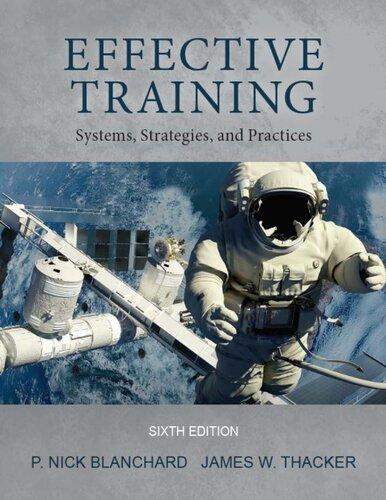To gain a better understanding of the expectancy theory framework, let's go back to Claudia in the
Question:
To gain a better understanding of the expectancy theory framework, let's go back to Claudia in the opening case. She was trying to decide whether to attend the executive development seminar as suggested by her boss. Today is the last day she can register for the seminar, which starts in two weeks. She postponed the decision as long as possible and now must decide. She feels confident about her ability to complete this training successfully, but she holds some doubts about whether it will teach her anything useful about running her marketing operation or working more effectively in a group. She knows that during her week of training, the marketing strategies for five important accounts will arrive on her desk, and she will need to review and finalize them before forwarding them to top management. They are due on the Wednesday following training. In addition, her normal work will continue to pile up. Claudia faces the choice between incompatible courses of action. Her cognitive processes, in expectancy theory terms, are illustrated in Exhibit 3.1. Examining Claudia's situation in terms of expectancy theory, we see that her expectations of success (Expectancy 1) are high for both behaviors. The expectancy of 1.0 means that she is 100 percent sure that she would successfully be able to complete either course of action. The Expectancy 2 links reflect the outcomes that Claudia anticipates if she successfully completes the seminar or stays at the office and completes her workload.
If she turns down the training and stays on the job, she believes that there is a 50 percent chance her boss will see her skills as inadequate. It would be higher, but she believes that if she can do a superior job on these strategies, he will not think that those relationship skills are so important. She believes that it's 90 percent likely that she will have feelings of pride and accomplishment for getting all her work completed on time. However, if she turns down the training, she believes that there is only a 30 percent chance that her boss will recommend her for promotion.
Conversely, if she goes to the training, she believes that the likelihood is 60 percent that her boss will evaluate her as having a more complete set of managerial skills. However, she will fall behind in her work, and it is a certainty (1.0) that she will feel harried, overloaded, and depressed. Yet she sees the chances of being recommended for a promotion increasing to 60 percent if she goes to training. As the valences in Exhibit 3.1 show, she values her boss's recommendation for promotion the most. She views having her boss evaluate her skills as being inadequate and the feelings associated with being behind in her work as the least desirable of the outcomes.
How would you use the formula to calculate Claudia's motivation to stay on the job or go to training?
Step by Step Answer:

Effective Training Systems Strategies And Practices
ISBN: 9780998814070
6th Edition
Authors: P. Nick Blanchard And James Thacker






